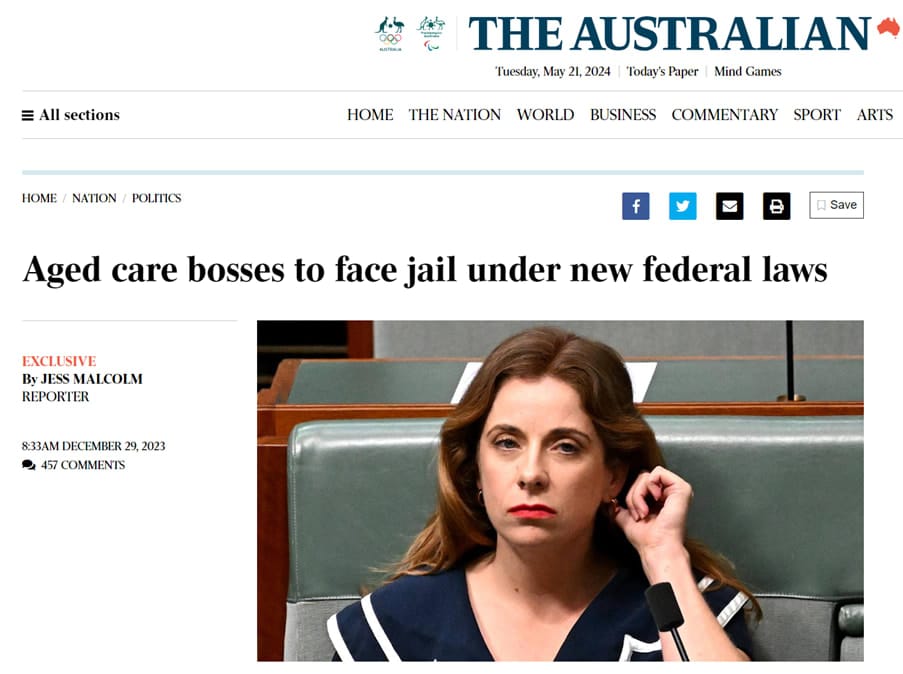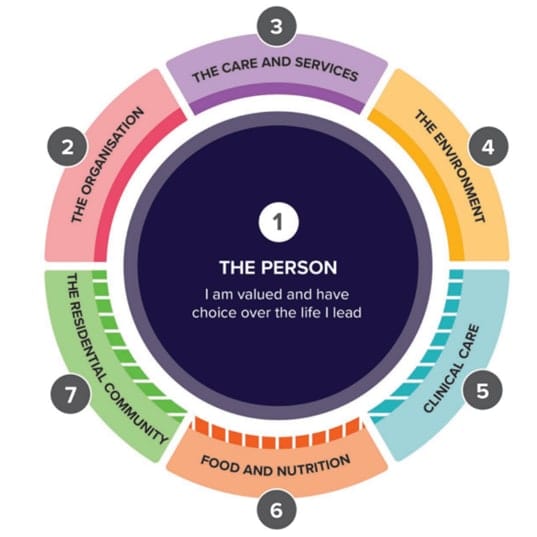“A terrifying system built to fail”: why CEOs are leaving the aged care sector
Former executives tell us why they are taking the opportunity to get out now, as multiple new Department measures cannot be met or accepted. What does it mean if the experienced leaders depart the aged care sector? In the last 12 months, an...

Former executives tell us why they are taking the opportunity to get out now, as multiple new Department measures cannot be met or accepted. What does it mean if the experienced leaders depart the aged care sector?
In the last 12 months, an increasing number of CEOs – some of whom have been in the sector for 20-plus years – have retired and moved to other industries. The past five years have delivered a ‘perfect storm’ of challenges, including the COVID-19 pandemic, chronic underfunding, workforce shortages and the ongoing aged care reform agenda. Leaders in the sector are fatigued and disillusioned. “As an aged care CEO, you have to try and run a quality service on the smell of an oily rag, and that’s your job,” adding that it isn’t a good job anymore, one ex-CEO told SATURDAY. But most of the blame is directed towards a system of compliance that is setting up the sector and its leaders to fail.
“A number of political decisions were made by politicians on the run without having an understanding of the industry,” stated another ex-CEO, “and that has set up a system that is unachievable.”
“For example, bringing in 24-hour nursing. The Minister was quite clear in saying that ‘no, they don’t have enough nurses, but we’re going to push ahead anyway so now we have a sector that is fighting and cannibalising each other from an acute care point of view.” A case in point: the Department of Health and Aged Care acknowledged that the sector was 5,800 Registered Nurses short in February but is pushing ahead with a new 215 direct care minute requirement in October. It is a failure before it starts.
Proposed criminal penalties are “terrifying”
Some said that they needed to step away for their own mental health and wellbeing, and the good of the organisation that they served. “When you start to work in an industry where you believe there is no light at the end of the tunnel, it becomes very difficult to then become motivated. And as a leader, if you’re not motivated, your organisation is not going to be motivated and that’s the point where you actually need to step away,” said one former CEO.
“There’s no point being a leader when your head’s not in the game anymore.”
The criminal penalties being proposed in the Exposure Draft of the new Aged Care Act were also singled out as the driver behind a number of executive and board director exits.

Many aged care providers still rely on volunteer board members, but even those with paid board members are asking the question: is this what I signed up for? “These penalties are terrifying for anybody who works in this sector,” said one current CEO.
“I think there will be many people who exit not because they have done anything wrong, but because proving that you haven’t done anything wrong is where the onus is now, and that’s not how you deliver care.”
“The obligation of running these businesses has reached a breaking point.”
“Crickets” around aged care in the Federal Budget
The latest Federal Budget released last week is also unlikely to shift the dial on this sentiment. “This Government came in with these big political statements, saying ‘this what we’re going to do’. And now there’s crickets. You’re not hearing anything about how they’re making the changes,” said one of the former CEOs. Six months executing the Aged Care Taskforce, with positive messaging to the sector, built hope for sustainable and quality aged care. Five months after the report was handed in, there is no hint of solutions, reinforcing demoralisation.
“They push back the changes to the Act, and the funding that is required to make these changes effective – the system is being built to fail.”
New Quality Standards increasing compliance demands
While there is now hope that the Government response to the Aged Care Taskforce’s recommendations will be released within months, the reality is that the compliance demands on the sector are unlikely to ease soon. Even if the Government reads the room and walks back on the criminal penalties in the next iteration of the draft Act, other measures are on their way that are raising the risk profile of the sector. See the strengthened Aged Care Quality Standards as an example.

The new Standard 5 on Clinical Care was written by the hospital regulator, the Australian Commission on Quality and Safety in Health Care – and therefore reflects hospital standards. Aged care homes are not hospitals. This pressure will be felt across the sector, but particularly in smaller organisations where the CEO has greater responsibility and line of sight on resident care. Many boards are already struggling to secure skilled and experienced directors.
Smaller operators more likely to struggle to fill executive gap
We understand that many of the executives who are currently leaving the sector work for smaller and stand-alone providers. With many CEOs close to retirement age, the sector faces a ‘brain drain’ of experienced executives within a matter of years. Will the boards of these organisations have the systems and supports in place be able to attract suitable replacements, especially in rural and regional areas? Candidates from outside the sector are unlikely to want to work for an organisation that may be running at a loss and where the senior management spends most of their time ticking boxes instead of strategising for the future. Larger organisations – with the management structures and systems to support and retain staff – will likely come out on top.






